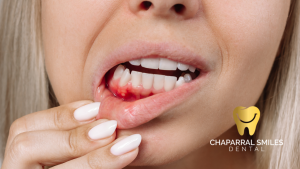Many people considering Invisalign treatment often wonder how long the process will take. The duration of your Invisalign journey can vary based on several factors, including your specific dental needs and treatment goals. On average, most patients complete their treatment between 12 to 18 months, but this can differ significantly. In this post, you will learn about the various factors that influence treatment length, so you can better understand what to expect on your path to a straighter smile.
Key Takeaways:
- Average Duration: Invisalign treatment typically takes between 12 to 18 months, depending on individual orthodontic needs.
- Complexity of Case: More complex dental issues may require a longer treatment time, while simpler cases can often be completed in 6 to 12 months.
- Regular Check-ups: Regular visits to your orthodontist are vital to monitor progress and make any necessary adjustments, impacting the overall duration of treatment.
Overview of Invisalign Treatment
For those seeking a more discreet way to improve their smile, Invisalign offers a modern alternative to traditional metal braces. This orthodontic treatment utilizes a series of custom-made, clear aligners to gradually shift your teeth into the desired position while allowing you to enjoy your lifestyle without the restrictions of traditional braces.
What is Invisalign?
Beside being a popular orthodontic solution, Invisalign consists of a series of clear, removable aligners crafted specifically for your dental needs. This innovative system is designed to help you achieve a straighter smile without the visibility and discomfort often associated with metal braces.
How Does Invisalign Work?
Along with the clear aligners, the Invisalign process begins with a consultation where your orthodontist will create a personalized treatment plan. Using advanced 3D technology, your dentist maps out your entire treatment and precisely designs a series of aligners that will guide your teeth into their correct positions (making sure you comply with wearing them for the recommended 20-22 hours daily is vital).
Overview, each aligner is worn for about one to two weeks before moving on to the next in the series, allowing for continuous and gradual adjustment of your teeth. Throughout your treatment, regular check-ins with your orthodontist will help monitor your progress and make any necessary adjustments (your commitment to wearing the aligners consistently will greatly influence the length of your treatment).
Factors Influencing Treatment Duration
Assuming you are considering Invisalign, several factors can influence the duration of your treatment. Key aspects include:
- The complexity of your orthodontic case
- Your age and dental health
- How often you wear your aligners
- Your adherence to the treatment plan
Perceiving these variables can help you better understand how long your Invisalign journey might take. For more details, check out How Long Does Invisalign Take to Straighten Your Teeth?.
Complexity of the Case
Along with individual requirements, the complexity of your case significantly affects the estimated time for treatment. If you have severe misalignment, more time may be needed to achieve your desired results. (Choosing the right treatment option is important for lasting change.)
Patient Compliance
Below your level of commitment plays a vital role in determining Invisalign treatment duration. Adhering to your prescribed wear schedule can lead to effective results!
At the end of the day, your success with Invisalign largely hinges on your diligence. Wearing your aligners for at least 20-22 hours daily enables the necessary movement of your teeth. Skipping these guidelines can extend the time needed to achieve your smile goals. Prioritize your commitment for the best outcome!
Average Treatment Time
Now that you’re considering Invisalign, it’s crucial to know the average treatment time typically ranges from 12 to 18 months. This time frame can vary based on your specific dental needs and compliance with wearing your aligners for the recommended 20 to 22 hours daily. For further insights, you can explore How Long for Invisalign to Work?.
General Timeline
About every case is unique, but the general timeline of your Invisalign journey can be broadly outlined. You will likely start with an initial consultation, followed by a custom treatment plan, and then receive a series of aligners changed every one to two weeks. (Be proactive in following your aligner regimen for the best results.)
Comparing with Traditional Braces
About the comparison between Invisalign and traditional braces, one key difference lies in treatment duration. Invisalign typically offers a more flexible treatment timeline, allowing you to enjoy the benefits of clear aligners while achieving your desired results faster. (This flexibility can be a significant motivator for you.)
Comparing Times
| Invisalign Treatment Time | 12-18 months |
| Traditional Braces Treatment Time | 18-24 months |
Understanding the differences in treatment time can help you make an informed decision about your orthodontic options. Consider which treatment aligns best with your lifestyle and goals. (The choice between Invisalign and traditional braces significantly impacts your overall comfort and satisfaction during treatment.)
Timeline Overview
| Initial Consultation | 1 Appointment |
| Custom Treatment Plan | 1-2 Weeks |
| Aligner Progression | Every 1-2 Weeks |
| Final Results | Approximately 12-18 Months |
Monitoring Progress
Despite the convenience of Invisalign, monitoring your progress is imperative to ensure your treatment stays on track. Regular assessment allows both you and your orthodontist to evaluate the effectiveness of the aligners and make necessary adjustments to achieve your desired outcome.
Regular Check-ups
Behind your successful Invisalign treatment are regular check-ups that typically occur every six to eight weeks. These appointments provide an opportunity to assess how well your teeth are moving and to provide you with the next sets of aligners. Ensure you prioritize these visits to keep your treatment plan on schedule.
Adjustments and Their Role
Monitoring your advancement involves more than just check-ups; adjustments also play a significant role. These adjustments can include changing the aligner sets, which are designed to gradually move your teeth into the desired position. Your orthodontist will determine when to switch aligners based on your progress (deciding to adhere to the aligner schedule is important for optimal results).
Monitoring your treatment is equally important as adjustments help to fine-tune the process. Each aligner is crafted to apply specific pressure to your teeth, and regular assessments enable you to address any concerns that may arise during the journey, ensuring your treatment remains effective. (Be proactive about discussing any discomfort or issues during your check-ups.)
Check-ups are vital to your treatment progress and should be treated with importance. Avoid skipping appointments to ensure you are on the right path—it is your proactive engagement that enhances the effectiveness of your Invisalign journey.
Lifestyle Considerations
Your daily routine may need some adjustments during Invisalign treatment. These aligners can affect how you eat, drink, and maintain oral hygiene, requiring some mindful practices to ensure effective treatment. Balance your lifestyle with these considerations to secure the best results.
Eating and Drinking with Aligners
Against popular belief, you must remove your aligners while eating and drinking (this decision is imperative for your treatment’s success). This allows you to enjoy meals without damaging the aligners and prevents food debris from getting trapped, which could harm your teeth.
Maintenance of Oral Hygiene
Eating healthy foods and practicing good oral hygiene is vital during your Invisalign journey. You should brush and floss your teeth before putting your aligners back in. Failing to maintain oral health can lead to decay or gum issues, which could hinder your progress.
Oral health plays a significant role in the effectiveness of your Invisalign treatment. You will need to brush your teeth at least twice a day and consider using an antibacterial mouthwash to reduce plaque buildup. Daily flossing is also imperative to keep your gums healthy while navigating the challenges of wearing aligners.
Final Words
Following this, it is clear that the duration of your Invisalign treatment can vary based on individual factors such as the complexity of your case and your compliance with wearing the aligners. On average, you can expect the treatment to last between 12 to 18 months, but it’s crucial to consult with your orthodontist for a personalized timeline. For more details on this topic, check out How Long Does Invisalign Take to Straighten Your Teeth?. With commitment and proper care, you can achieve the smile you desire.





